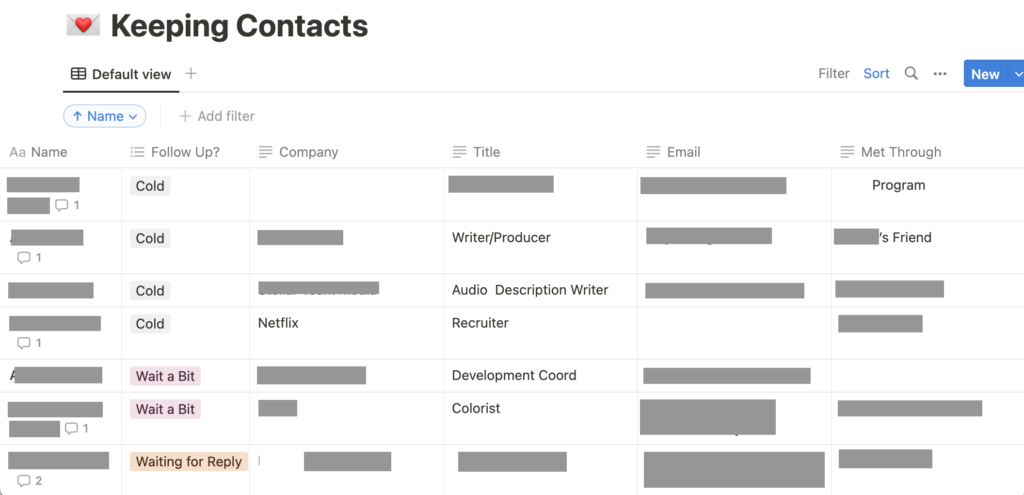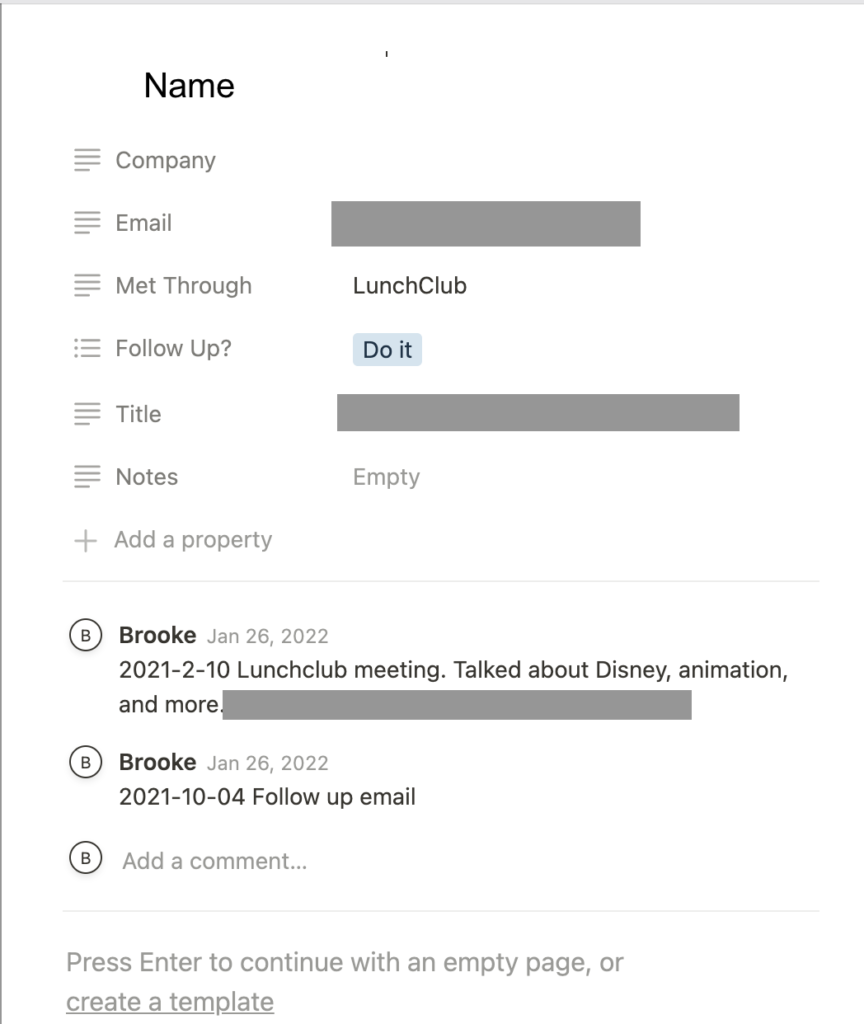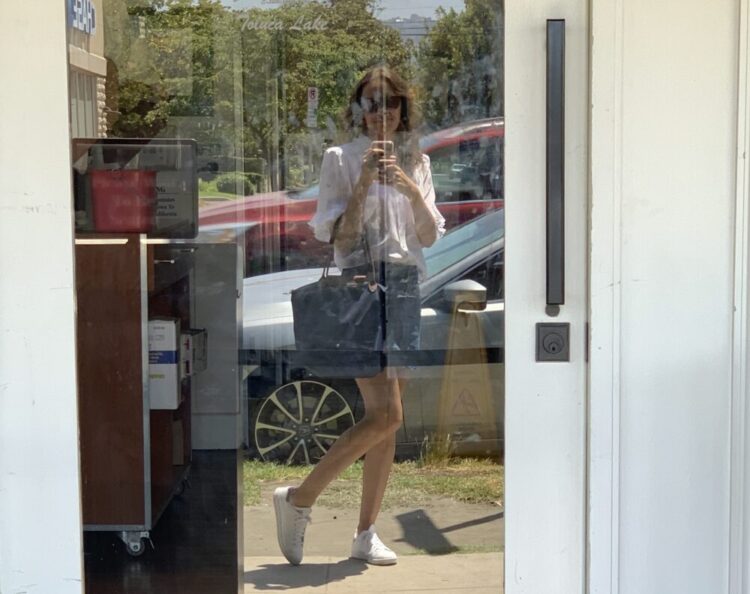or, How To Network As A Social Troll Who Knows No One
I hate networking. I hate it. I absolutely hate it. I hate sitting across from someone with overpriced coffee trying not to smudge my lipstick and think of witty things to say while I try to act like I’m not trying to think of witty things to say. I hate the awkward pauses on zoom calls with strangers where I try to figure out if it’s frozen or they ran out of things to say. I hate feeling like people feel like I’m using them (I really do care! I swear! I also need a job but the two are not mutually exclusive).
I don’t write this with the flippancy of someone with that casual charisma, someone who could make every faux pax and still be deemed lovable through their unavoidable magnetism. I write this as someone who has spent the last 27 years stumbling over all the wrong words and trying not to shoot laser beams of “hire me” desperation out of my eyes, and still managed to get an industry job.
I write this for the fellow social trolls out there, still overwhelmed from all this noise after a nice pandemic-inspired break. It’s time to shed a few warts and leave behind the bridge you’ve been hiding under, waiting for a lucky traveler to stumble past.
Part One: Finding People to Network With
“But Brooke” you’re saying. “I’m not a nepo-baby. My dad’s not Bob Iger. I live in Minnesota and I’ve never been outside the midwest.” Don’t worry, it’s not 1948 anymore. It’s not even 2019. We have the internet, and Zoom. These days, there’s no excuse.
Start with LinkedIn. Sign up and get your profile looking sharp. Put your school, your photo, a witty little tag line about what you’re looking for. Include every (good) thing you’ve pretty much ever done.
Add everyone you know and don’t actively hate. Your goal is to get to 500 connections (because people are shallow and after 500 it says 500+). Not just friends: parents, friend’s parents, professors, old friends you still have on instagram but you don’t really talk to anymore.
Now that you no longer look like a bot, you’re ready to start doing cold reach outs.
Start with alums from your school who work in your field. Search by title (e.g. “Pepperdine Writer”) and industry (e.g. “Pepperdine Television“). You can also go to company pages and click “(x) people from your school work here” to view a complete list. If your school has a relatively small alumni network, start thinking of other organizations you’ve been involved with. Maybe you were in greek life, and can reach out to that alumni network. Or you were part of a club that had chapters across the country. Maybe you worked at a company like Disney or Starbucks that has a loyal and vast alumni network. (Disney College Program alums are almost always willing to help former CPs).
Start making your list of people to reach out to. They don’t have to be doing the exact job you want. If they’re in the industry at all, you’re going to message them. You’ll have extra success, often, with people who have things in common with you, so start with people who were in the same clubs, or same major, or (even better) knows someone you know.
Once you’ve exhausted LinkedIn, try new outlets.
Reach out to the career center at your school. It can be hit-or-miss, but you can ask if they have anyone they can connect you with; usually they have some people.
Sign up for LunchClub. It’s like blind dates for networking. I’ve gotten some solid contacts through there (and some attempted cult recruitment haha). It’s invite only, but if you know me personally, I’m happy to invite you. If I don’t know you, ask around and find someone who you can talk to.
Tell literally everyone you know that you’re looking for a job in this industry. My current job came from my parents’ neighbor’s daughter’s childhood friend who she reconnected with at her high school reunion last year. Another came from a friend of an old professor at a community college I took classes at after college. Post on Facebook, make it clear on your Linkedin.
It feels scary to start out telling people (dreams are fragile! please don’t crush them!) but it gets a easier. I promise. I mean, look at me, telling you all my deep dark secrets.
Once you have your list, it’s time to start making it work for you.
Part Two: The Cold Reachout
(If you have a mutual connection, you can ask the connection to introduce you and skip the cold email: go straight to the call instead).
Remember when you were a kid and your scout troop/soccer team/school made you go ask people to buy magazines/cookies/chocolate bars? And you were cute so people were mostly too nice to say no?
You’re not so cute anymore (sorry) but you’re a lot more tenacious.
Get your list ready; it’s time to get knocking on some (metaphorical) doors.
You’re going to send a message to every single person on your list who you don’t have a personal connection to. On LinkedIn you can make it part of your add request, since they’ll try to charge you if you send an InMail to someone you don’t know. (If there’s no add button on their profile, click the three dots under their name and it’s usually there).
The good news is, you can send a variation on the same message to every single person. Edit this template to whatever feels best for you, but this his what I use:
Hi [name],
I’m a fellow alum from [school, or other org] and am trying to break into [Industry]. I noticed you [whatever made you pick them]. If you have any availability I’d love to have a call to pick your brain for 15 minutes and hear any advice you can share on breaking in.
Thanks,
[name]
It’s like MadLibs, but not mad. Maybe more like ProfeshLibs.
If you send that out to 100+ people, and probably 50% of people who see it (which is 10-20% of people you send it to) will want to help, 25% of those people will get around to replying. Don’t get discouraged: you only need one person to start your network.
Don’t forget to network at your own level too! The people job searching right now are your future coworkers. You’ll pass job leads back and forth like you used to pass notes in class, and when you’re in need of advice, they’re the ones you’ll turn to. Facebook groups are great for this, as are clubs on campus, or young professionals events. Additionally, the people who are a year ahead of you are the ones who can actually give you the best advice: the world has changed a lot in the past few years, anyone who broke in before 2020 doesn’t entirely know what it’s like to be in your shoes: your peers do.
Once they reply, you’ll go back and forth on scheduling. Let them give a time first. If they refuse to give a time, offer them a few options. If they throw out only times you can’t make, it’s okay to tell them that. Once you land on a time, it’s finally time for the Call.
Note: some will say you can ask questions via email instead of a call. This isn’t ideal, and will rarely amount to much, but do it. You may not build a relationship off the email, but if you don’t reply or press them on having a call they’ll resent you over it.
Part 3: The Call
Your palms are sweaty. You’ve changed shirts five times. Has that vein by your left eyebrow you’re suddenly spying in your Zoom self-view always been there, or is it popping out today in a new way? No matter, it’s too late to change the lighting and with Zoom you don’t have to worry about a sweaty handshake.
Before you get to this point, do your research. The world is at your fingertips: there’s no excuse for not knowing the basics. Skim their social media. Read their LinkedIn, their website. It’s not creepy; they’ve made this info publicly available because they want people to know it. I once went into an interview knowing my interviewer had, in college, tweeted a Walt Whitman quote hoping to sound like he was reading Walt Whitman and not like he had watched the new Apple commercial (maybe don’t dive that deep on your research). It helped me feel more confident; he was once a pretentious Creative Writing major like the rest of us. I also knew to tailor my conversation with him like I was talking to a writer, not an HR coordinator.
If you have any questions that pop into your head naturally as you’re researching, that’s great! Write them down. Have at least seven questions when you go into your call, and make sure they aren’t derivatives of each other. You do not want to run out of things to say. Oftentimes, they’ll offer answers to a lot of your questions on their own, and as soon as the answer’s been given, that question is off the table. The longer a story the answer might hold, the better: avoid yes or no questions like the plague. Some conversations will flow easily, and you won’t refer to your list at all. But some will be you and your new connection staring at each other, awkwardly, pushing through the longest of pauses. In these cases, your question list is the lifeline that will pull you through this mess of a conversation.
I have a few questions I ask everyone, because I find their answers to almost always be helpful.
First, “how did you get started in this industry?” Answers to this question can give you ideas on what your first steps should be. Sometimes you’ll have to push on this: they’ll answer with your first job, and you have to ask how they got that job.
Second, “if you were in my shoes, what would your next steps be?” I really love this question because they start thinking about what you need: and by extension how they might be able to help. Often, they’ll give you some solid ideas.
Before you have the call, you also need to research what your current goal is, what your eventual goal is, and have that drilled down to a single sentence.
If you’re open to anything, pick a direction to tell them. People like people they view as knowing what they want. It shows you’ve done your research and understand your own skills and the skills required of the position (note: do this research, because the second thing they’re going to ask after “what do you want to do” is “why?”). You can always qualify it with “I’m open to starting anywhere” but the more you appear to know what you want the more people want to help, because they think you’re more committed.
If you are open to a few different directions, you can customize your goals to who you’re meeting with. I would love to work in animation and live action over the course of my career; when I meet with someone who’s always worked in animation I am all-in on animation. I flip it when I meet with someone in live action. I truly am passionate about both, but if I say that I come across as wishy washy.
Have your resume ready to send after the call – many will ask.
As you have these calls, you’ll start to figure out a rhythm. You’ll see what questions give you interesting answers and what ones are repetitive. You’ll find your own questions that you love and others that you hate.
Now, let’s be honest for a second (because you can’t be, not really, on the call): you’re there because you want them to say “oh I have a job for you.” They know this. You know this. You can’t say this. On the bright side, you never need to ask about a job; they know you want one and if they have one they’ll offer it.
However, you can make sure they know what you’re looking for. At the end of the call, ask if they might send any leads your way for your preferred role, if they hear anything. If they haven’t offered already, ask if you might be able to follow up with them if you have any more questions down the line.
You should also ask (if the call has gone well) if they have anyone else you might be able to talk to; this is how you keep growing your network once you’ve run out of people to cold-reach out to.
As a side note: don’t go over the agreed-upon amount of time for the call, unless they keep pushing for more. Even if they’re still going, make sure to mention at your designated end time that you want to be respectful of their time. Give them the opportunity to leave, even if they don’t take it. Making a good impression is waaaay more important than whatever question you wanted advice on. Honestly? You can google it.
Part 4: Maintaining Your Connections
You met them. You had a jolly-good time. You’re on your way to becoming best friends forever. But now what?
Honestly, now comes the hardest part – finding a way to grow your fledgling relationship into something bigger, even though they’re at a different level than you and you have no occasion ever to see them again. That’s okay, that’s why we have spreadsheets (we’ll get to that in a second).
First, thank them via email within 24 hours. It doesn’t have to be anything fancy. If you can, mention a piece of advice that stuck with you. If they asked for your resume, website, whatever this is the place to send it. You can also gently remind them of what they said they would do with a “thanks so much for your offer to (connect me with someone, read my script, pass along my resume, etc.), I really appreciate it.”
I use this format for my thank you notes. I even have it saved in my gmail templates, so I have it ready to go: you really don’t want to go over 24 hours, and I know emails scare me and I procrastinate on them like there’s no tomorrow (and if there’s no tomorrow there’s no consequences of not sending them, right?). Having a template helps me send them faster and get over my fears.
Hi [Name],
Thanks again so much for taking the time to talk with me today. I really appreciate all your advice [specific detail] and your words of encouragement.
[Call to action]
Have a great rest of your week.
Thanks,
Brooke
I’ve actually even started sending little thank yous in other areas of my life, like hanging out with friends. People will pretty much always appreciate being appreciated. (If they don’t, they probably aren’t the types of people you want in your life anyway).
Once you’ve sent them your thank you note, add them to your Networking Spreadsheet.
I use Notion for this, but you can use anything. The key is to keep track of how you met, what you talked about last, and when to follow up, because you’re going to follow up every 3-6 months.

This what mine looks like. Clicking the names on the left on the chart pulls up this:

(If you also use Notion, you can get my template for this here and save a few steps.)
If you land a job, that’s the perfect time to email. Let them know, ask what’s up with them, thank them for their help on the journey to your shiny new job.
If you don’t have a life update, email about anything. I had a girl I had a call with in the summer email me in October asking if I’d watched the new Hocus Pocus, and I was impressed that she started a conversation. The next time someone asked me if I had any PA recommendations, I reached out to her.
You ALSO can email when you apply for a job at their company, asking if they “happen to know anyone on that team and could help make sure your resume gets to the right person”. This is code for “please recommend me,” and it’s just how the game is played. Recommendations almost always make a difference, and applying to jobs cold pretty much never works out.
Eventually, you will start forming an actual working relationship. You’ll get to a place where you actually both enjoy coffee together, and your conversations will be more “formal friends” than “two strangers trapped in small talk”. That’s when you know you’ve made it.
Also, start keeping up on industry news. If you see something interesting (positive interesting, not layoffs) you can use that as a conversation starter. It’ll also help you when you actually get into the industry; people respect knowledge. Read industry papers, listen to podcasts, there’s literally no excuse not to know what’s going on in the 21st century.
Periodically (every year, at least) ask for another call. Suggest you catch up. When I was very first starting out I lived in San Francisco and was networking in LA: whenever I was in LA, I would reach out to everyone and say hey, I’m in town, I’d love to grab coffee if you’re free.
That’s it. Rinse and repeat and people will start describing you as a “people person”. Maybe even (gasp) charismatic. It’s a lot, but it’s also not not doable.
Climb out from under that bridge, social trolls. It’s time to storm the extrovert’s castle.


